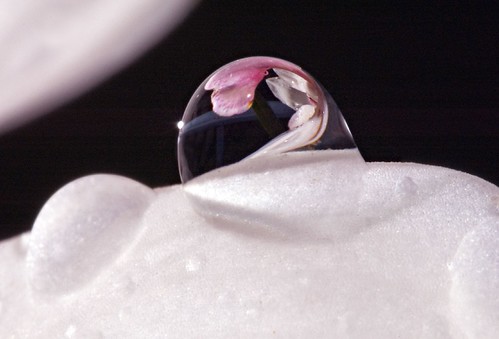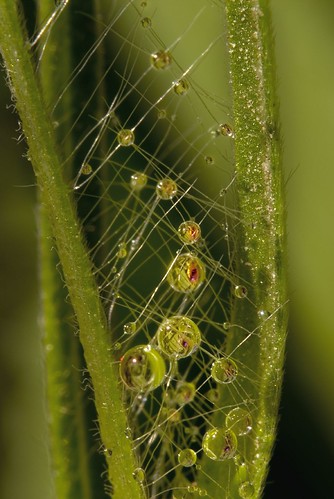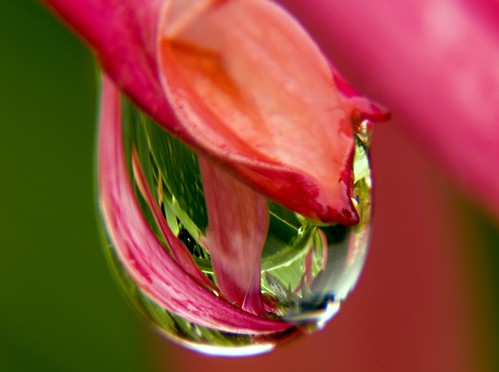Why am I so interested in photographing water drops? What are the special challenges and techniques associated with photographing water drops? Do different water drops have different characteristics (in other words, is there a taxonomy of water drops from a photographer’s perspective)?

Orchid Water Drop, photo by Harold Davis. View this photograph larger. Read more about this image.
Leaving the technicalities of water drop photography aside for a second, water drops interest me because they are, as poet William Blake put it, a world in a grain of sand. Each water drop seems like a complete world, or universe, to me with its unique colors, reflections, and refractions. These worlds are ethereal and ephemeral, meaning they are fragile, ghostly, almost like magical parallel universes.
Technically, water drop photography is macro photography with some subject-matter specific difficulties. Macro photography in and of itself is one of the most technically difficult kinds of photography because once you get really close to a small object, inherently shallow depth-of-field, precise focus, and motion—even the slightest motion—are all issues that can defeat a photograph, no matter how beautiful it would be otherwise.
What makes water drop photography a bit more difficult than run-of-the-mill photography of very small subjects is the extreme reflectivity of a water drop and the fact that a water drop is in almost constant motion.
There are some techniques you can use to help abate the motion problem. For example, the photograph at the top of this story was taken using a macro flash. Here’s a story I wrote about using flash to enhance water drop photography. Under the right conditions, using flash to light water drops can both stop the motion of the water drop and also provide sufficient depth-of-field.
As with photographing flowers in the field, one can use a special clamp to hold down the plant or branch that “hosts” the water drop. Here’s more information about using clamps to control the motion of a water drop so one can make a long exposure.
Once your lens is really close to a water drop, you may as well realize that your depth-of-field is going to be shallow, even with the lens stopped down as far as it will go. The only remedy for this is precision. Precision about focus, about placing the camera focal plane parallel to the subject, and about composition. You may find that a magnifying eye piece attachment helps with this.
Here’s where the precision of composition comes in. If you recognize that even at f/64 there will not be all the depth-of-field you might like, then you need to focus on the key elements of the composition, hopefully towards the center of the image front-to-back. For example, in the photo of water drops on an ice plant below I focused on a water drop very much in the mid-zone of depth.

Nature’s Harp, photo by Harold Davis. View this image larger. Read more about this image.
Yes, Virginia, there is a taxonomy of water drops. Water drops from irrigation have very different characteristics from water drops generated by a spray bottle or in the studio. And water drops that are genuinely from rain are best of all. Of course, it is really rare to get water drops from rain in the sunshine. Because even if it rains and then is sunny, water drops will then evaporate very quickly. So if you are interested in photographing water drops, and there comes a day of rain followed by sunshine, get out there with your tripod and macro gear. Particularly if the day is without wind.
Once you spend some real time looking closely at water drops, you’ll be able to distinguish rain drops from “artificial” water drops. For example, the photo below shows a classical “real” water drop on an echinacea flower in my garden.

Echinacea Water Drop, photo by Harold Davis. View this photograph larger. Read more about this image.
To learn more: Water Drops category on Photoblog 2.0, Water Drop Photograph Techniques.
Pingback: Hyper-Reality